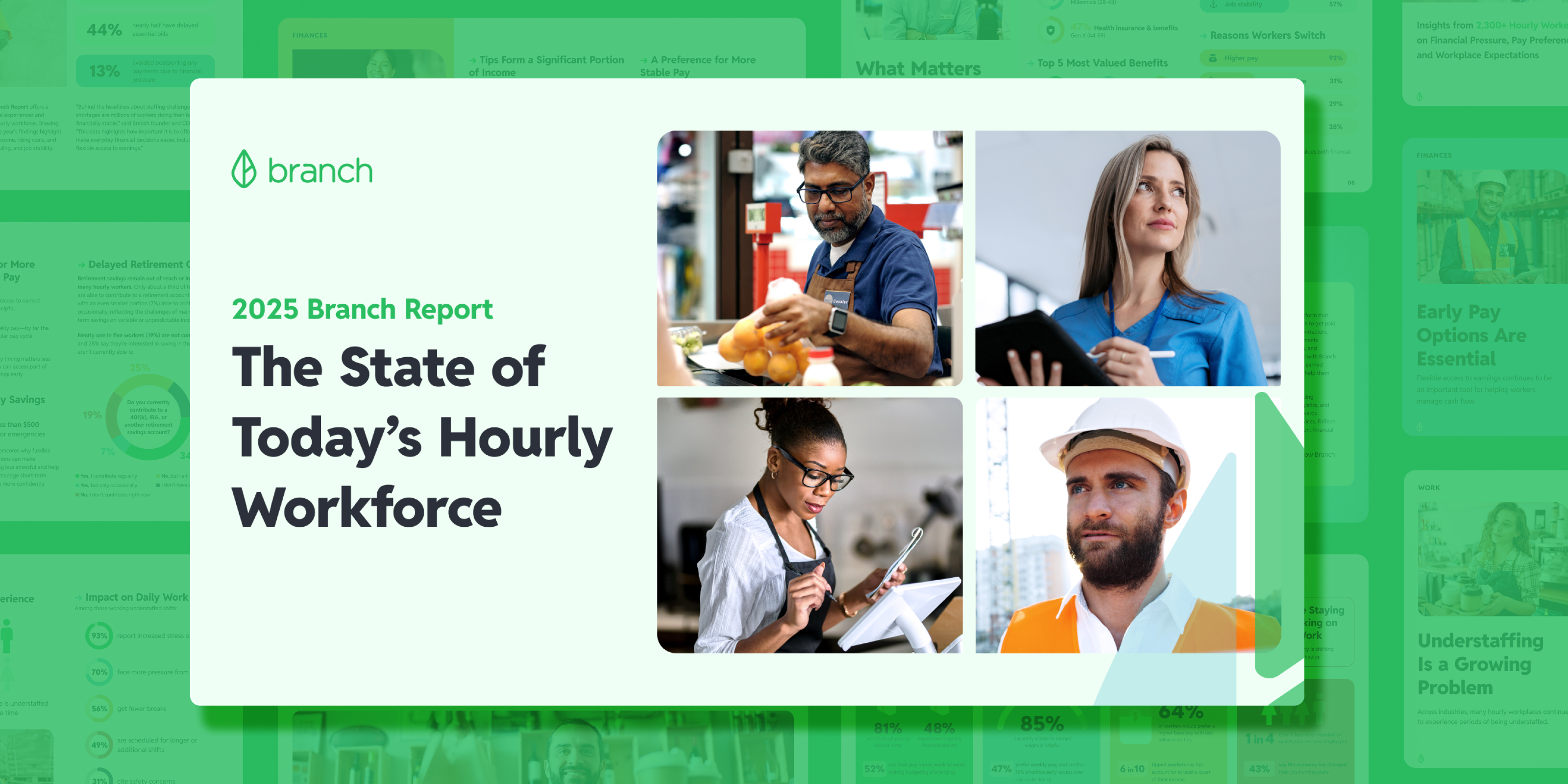
6 Workplace Trends Shaping the Future of Work
Nearly every aspect of our world has been altered over the past three years, and the workplace is no exception. But now that the dust is settling on some of the larger transformations, what does the future of work have in store? To understand where we’re going, let’s look at the top workplace trends that have been born out of three years of disruption, change, and uncertainty—and the positive outcomes that are possible when businesses aren’t afraid of transformation and innovation.
First, let’s look at some key stats that provide perspective on just how much the workplace has changed in the past three years.
- 72% of knowledge workers want to remain in either a hybrid or remote-hybrid working model.
- Emotional and mental health programs are now a staple benefit offered by 53% of employers.
- By 2024, it’s expected that 35% of in-person meetings will be replaced by virtual meetings.
- Slack, one of the most used corporate messaging tools, hit a record of 12 million daily users during the pandemic, and it’s estimated that this number kept slightly rising in the years after.
- Half of companies said they’re looking to accelerate automation in their workplace thanks to the pandemic.
Retaining a loyal workforce and helping your business thrive hinges on meeting the moment. These workplace trends are shaping the future of how, where, and why people work—and they’re what every business needs to understand to see success in the coming years. Here are six key workplace trends that employers should be paying close attention to—and how to embrace them.
1. Rethinking office floor plans
Once the pandemic hit, any job that could be done virtually was quickly switched to a remote-first style of work. This proved that many computer-based jobs did not need physical office spaces to conduct business—in fact, it proved to be a line item on many company budgets that proved unnecessary. Many of these same companies have remained remote-first, meaning they can hire workers from anywhere in the world, amplifying globalization and creating virtual workplaces that are more flexible, inclusive, and diverse.
Brick and mortar shops, restaurants, and other businesses that remained open during the pandemic have also undergone changes to their physical spaces. From floor markings that used to indicate how far apart customers should stand to new regulations on air ventilation, cleanliness, and seating capacity, everyone has had to adjust to more physical distance in the workplace. Even companies that went back to the office after being remote are now prioritizing open seating arrangements and more space between work stations.
2. The Introduction of the four-day workweek
Let’s play a game: what do Belgium, the United Kingdom, Spain, Iceland, and Japan have in common? All these countries have successfully tested and implemented a four-day week for employees and businesses. This flexibility is not only beneficial for employees but also for employers. In a recent survey, 80% of employees said they are more loyal to a business that offers flexible work. Additionally, employees with flexible working arrangements actually work more and are more productive than those with a regular in-office work schedule. Those with flexible working arrangements were found to work 16.8 days more per year than their 9-to-5 office peers.
Increasing the number of ways employees can work and letting employees choose their hours helps them feel more engaged with the company, more autonomous, and helps them maintain a healthier work-life balance.
3. Boosting morale and engagement: IRL and virtual team-building events
According to a Buffer 2023 study, the second biggest workplace challenge for remote workers right now is loneliness, with 23% of workers saying it’s become a struggle. Let’s face it, having a better work-life balance it’s great, and it can truly improve productivity and mental health. However, there is a downside: morale and engagement. Employees that work remotely and have flexible hours can sometimes feel more isolated and disconnected from their colleagues. But, not everything is doom and gloom. In-person and virtual team-building events are on the rise.

Here are some interesting stats about the current state of team-building events:
- Virtual team-building events help increase employee performance rates with 41% less absenteeism and 21% increase in profitability
- In 2023, 81% of employers are planning to do more face-to-face team-building events compared to last year
- More than 80% of businesses and employees say that creating a sense of community at work is crucial for performance and overall employee engagement and satisfaction
Whether you want to plan a simple lunch with your team, a virtual coffee break, or an exciting off-site scavenger hunt, the truth is, team-building events are now part of modern workforce needs. However, it’s important to ask your employees what sort of events they would like to participate in. After all, you don’t want to add stress and pressure to their workplace social life–as the Wall Street Journal highlighted, team events should be about connecting, not forcing people to be ‘fun enough’ to keep their jobs.
4. Adapting to payroll practices of the future
The modern workforce, composed more and more of tech-savvy millennials and ultra-tech-savvy Gen Zers, is all about faster payments, digital banking, and better financial wellness perks to keep up with inflation and the rising costs of living. With 75% of Americans worrying about their finances, employers can be at the forefront of helping improve employees' lives—and even the overall economy. By offering things like digital tipping, online banking, and Earned Wage Access, you’ll improve your staff retention rates and even move the needle in your direction when employees are choosing where to work.
Branch’s Earned Wage Access solution is a great way to improve your employee's financial stability–and satisfaction. It allows workers to access up to 50% of their pay before payday if needed, providing peace of mind for unexpected expenses or cash flow challenges.
Want to know more? Here’s a guide on how Earned Wage Access is solving the hiring–and retention–crisis.
5. Emphasizing DEI efforts
Creating an inclusive workplace for all workers, no matter their race, ethnicity, background, or abilities is important for an organization that wishes to continue to grow in 2023 and beyond. Not only is it of utmost importance to be more inclusive to fight the talent shortages seen across industries, but it’s important to retain current workers. 81% of workers say they would consider quitting if their employer does not show DEI (diversity, equity, and inclusion) commitment.
In 2022, there were 10.7 million job openings and six million unemployed people in America. Doing everything you can to attract the right talent (and keep it) is essential to survive in today’s economy. Being inclusive is a way to tackle both of these things. You’re opening the gate to more people and finding talent where you wouldn’t normally look, and you’re showing your employees your commitment to DEI along the way.
6. Supporting employee well-being and personal growth
Whether it was a direct effect of the pandemic and the weight it had on everyone’s mental health, or it was a natural progression from modern life, companies now care more about their employees’ well-being. There’s an increased focus on the mental health of employees, as well as their overall satisfaction at work, and even more focus on their financial wellness and career progression.
The U.S. Department of Labour recently showed that 80% of businesses with more than 50 employees are offering employee wellness programs. Offering wellness programs to employees and checking in on their mental, physical, and financial well-being can make a lot of a difference. Employees that are well mentally, physically, and financially have increased productivity, take fewer sick days, and have lower rates of burnout and turnover.
And lastly, if you want your employees to stick around, you need to help them grow and see what they are capable of. With 94% of workers saying they would stay in a job where the company invested in employee growth and development, you know it’s something you need to do. Additionally, hiring a new person can cost you, on average, around $4,000. Instead, training an existing employee costs, on average, $1,252, according to the Association for Talent Development. Save money, boost employee engagement, and fight turnover by supporting your employees in their career journeys.
See your workplace thrive by following these workplace trends today!
The world is quickly changing, and so is the workplace. Ensure you make the most out of it and become future-proof by focusing on the six workplace trends mentioned in this article. These will not only help you retain and attract more employees, but they’ll also help you be more productive—and profitable—with happier employees and customers. Start today and see how the future transforms for you and your employees.
Branch is here to help you adapt to the working world of tomorrow by making faster payments and other financial wellness tools available to you and your workforce for free. Request a demo to learn more about how we can help your company be better prepared for the future.
Continue reading
Unlock a Happier, More Productive Workforce







